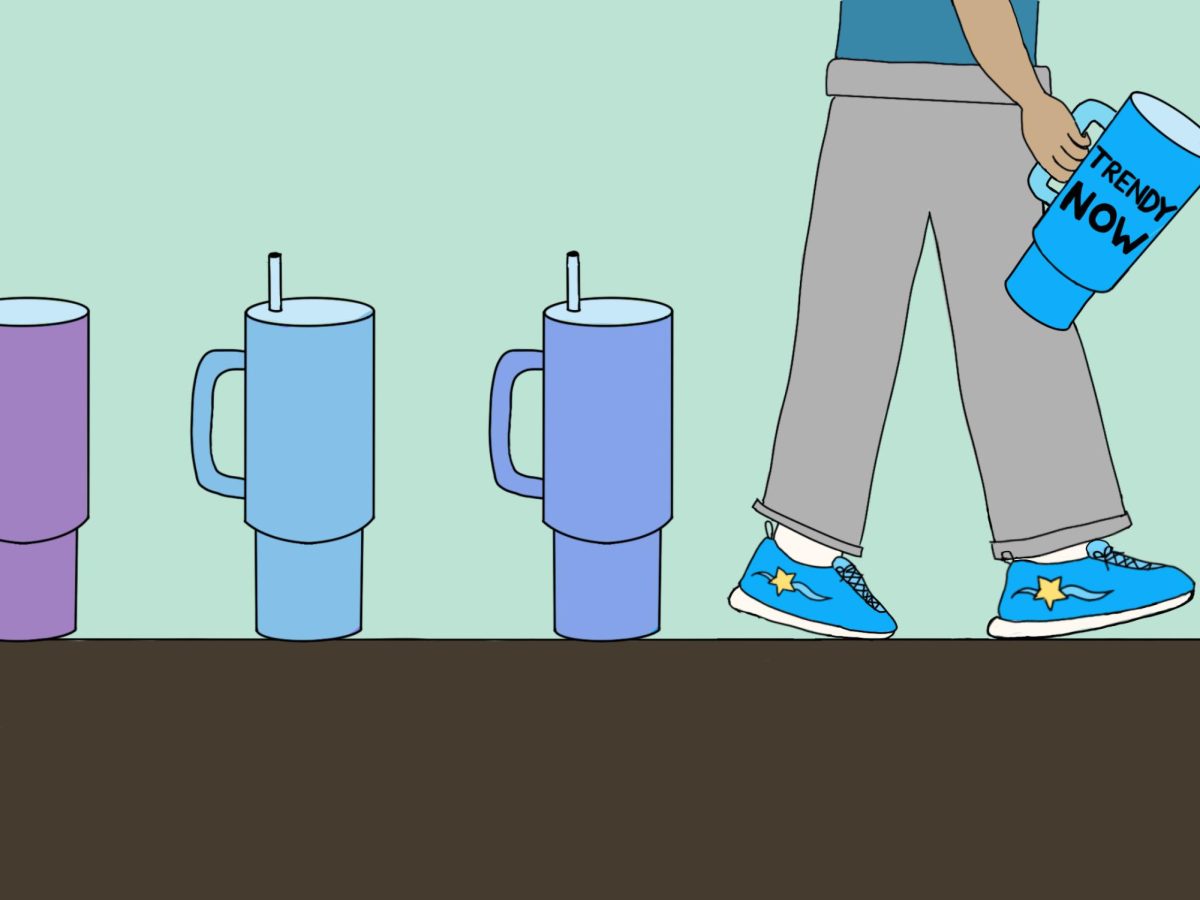In 2019, it was almost impossible to get through a class period without someone’s Hydro Flask water bottle crashing to the floor and interrupting the lesson with a loud clang. These bulky, sticker-covered bottles became wildly popular and were the ultimate status symbol for teenagers.
I wasn’t immune to the Hydro Flask epidemic. I had my own purple one, complete with matching stickers. But I’ve noticed that the Hydro Flask interruptions have faded. Now, teens have new, trendy alternatives sitting on their desks. This shift represents a recurring pattern in consumer culture, where certain brands soar in popularity only to be replaced by a different one soon after.
First, it was Hydro Flasks. Then, Stanley tumblers. Now, everyone wants an Owala. Brands fuel this cycle of consumerism by releasing new colors, collaborating with influencers and marketing products as must-have accessories rather than practical essentials. Just as you begin to feel satisfied with one bottle, a different brand releases a new version, and the pattern repeats. Reusable water bottlesare meant to promotesustainability, but because consumers are driven to constantly purchase new ones, they aren’t effectively serving that purpose anymore.
The issue isn’t the bottles or the brands that sell them. The problem is that teenagers cycle through water bottles as if they’re disposable, even though they’re called “reusable.” Social media and peer influence create pressure that makes us feel like we need the newest and “coolest” water bottles when the smartest choice may actually be the one that functions best. Because we’re conditioned to chase what’s new, we rarely stop to ask if a new water bottle is truly necessary. We should begin to prioritize the actual purpose of these products, their longevity and function, over their popularity.
The desire to fit in is a natural part of being a teen, but constantly following the latest trends reinforce wasteful habits and create harmful, materialistic competition between teenagers. This issue extends beyond water bottles and seeps into nearly every aspect of our spending habits. Take clothing, for example. Even with a closet full of clothes, teenagers buy new outfits because of online trends. That same pattern repeats with technology. Every year, a new iPhone launches, and the perfectly functional one in our pocket suddenly feels outdated. These cycles aren’t about working towards improvement. They’re about keeping up with everyone else.
So many of us purchase new versions of products out of social pressure, not necessity. Rather than blindly following these fleeting trends, we should start to ask ourselves if we truly need something new or if we’re just giving in to social influence. Whether it’s water bottles, clothing or technology, learning to appreciate what we already have can help push back against consumerism. The most sustainable, smart and “cool” choice might just be keeping the items you already have.


